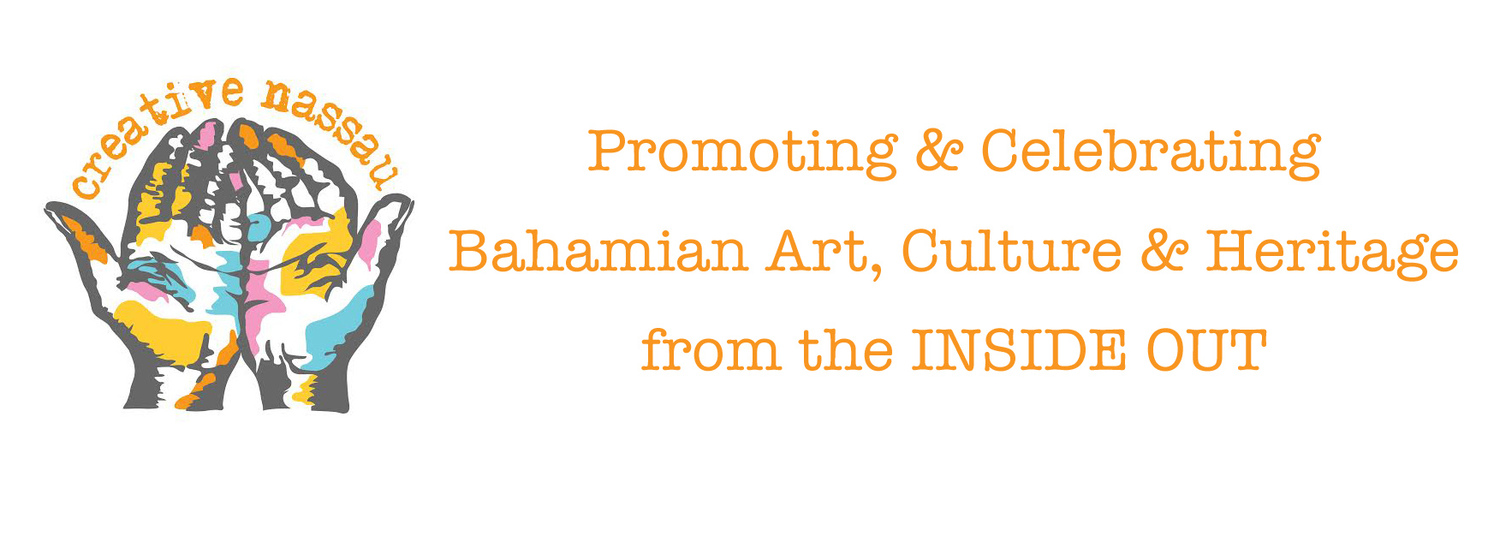(This post is by kind permission of littlehousebytheferry) Posted on May 14, 2014 by littlehousebytheferry
Of all the Bahamian artisans I met at this year’s Island Roots festival, one of my favourites was Rose McKenzie.
Straw worker, Rose McKenzie, weaves dried strips of palm fronds into plait
Rose told me that, as young girls in Exuma, she and her sister, Neuiza Rolle, learned traditional straw work from their mother. The hats and baskets they produced provided vital funds for their family during difficult economic times.
My grandmother, Lurey Curry Albury, told a similar tale.
Early in the 20th century, Green Turtle Cay’s economy suffered several devastating blows. Its lucrative pineapple industry dried up when Cuba began exporting the fruit, and the U.S. annexed Hawaii, creating its own domestic supply. A burgeoning sponge industry was wiped out when disease killed off the local sponge beds. And in 1932, much of the settlement of New Plymouth was destroyed by a category 5 hurricane.
Devastated and deep in poverty, the residents of Green Turtle Cay cobbled together livings as best they could. For my great-grandfather, Pa Herman, this meant fishing and small-scale farming. My great-grandmother, Ma May, sewed straw hats.
A straw hat, similar to those sewn by Ma May, and a roll of plait on display at the Albert Lowe Museum, Green Turtle Cay, Abaco
Below, my grandmother describes how she harvested palm fronds and processed them to make plait – rolls of woven or braided straw from which hats and other handicrafts are created.
“Mama would sew the straw hats, but I would make the plait. I used to go down to the Long Beach. There used to be coconut trees there. And there were plenty of thatch-top trees over at Black Sound.
We used to get the young palm tops – cut them out of the head of the tree. We would cut those tops open and put them in the rock oven, let them get kind of crisp. If we didn’t have rain, we’d put them in the sea to bleach. Then, we would strip the palm tops with a needle or pin to make the strands to plait.
Sometimes I’d mix white-top palm and coconut leaves together. Other times, I’d plait all coconut leaves, or make lace plait. Uncle Ludd would take the plait that I made and sell it up around the islands. He would bring me the money.
Rolls of plait for sewing hats and bags
We used to send bundles of palm tops to a lady on Guana Cay, and she would send some to another lady on Man-O-War. They would make plait, keep a little for themselves and send the rest back to us.
Miss Leela, a Man-O-War woman, had a store down on Market Street in Nassau, where she sold dress material and different things. She used to sell the hats Mama made, but she didn’t send the money. She would send us material and other things we needed from the shop.
When the mailboat would come, people were always sending plait to Mama, asking, ‘Miss May, can you sew this hat for me?’
I remember when Sister Hughes and her husband came to Green Turtle Cay. Mama sewed Mrs. Hughes a hat. The plait was open and lacy, and I made roses out of crepe paper and put around the edge. Sister Hughes used to go to go to church in it.
I had one, too. I made the edging plait out of navy blue crepe paper and Mama sewed the hat. I made white paper roses, and put them right around the front. Mama put wire under the brim. You wouldn’t know that hat wasn’t bought in a shop!”
For many visitors to the Bahamas, straw bags and hats are little more than cheerful souvenirs. But for Rose, my grandmother and other Bahamians, this traditional handicraft generated much-needed income for their households during times of desperation and want.



